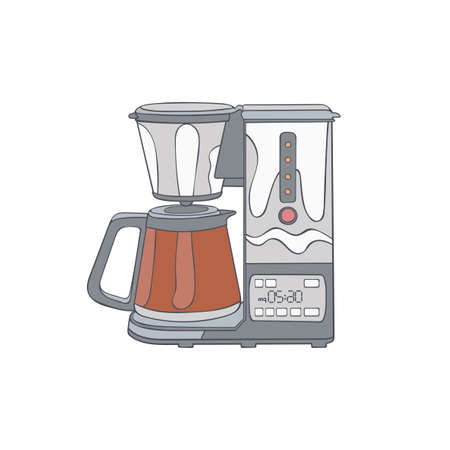1. Why a Coffee Scale Matters in Your Home Brewing Setup
If you’re serious about making great coffee at home, a reliable coffee scale isn’t just a nice-to-have—it’s essential. Whether youre brewing with a pour-over, French press, AeroPress, or espresso machine, precision makes all the difference. A quality coffee scale helps you measure your coffee and water down to the gram, which means more consistency and better-tasting coffee every single time.
Consistency Is Key
One of the biggest challenges home baristas face is repeatability. Ever made an amazing cup of coffee one morning, only to struggle recreating it the next day? That’s where a coffee scale comes in. By accurately measuring both your coffee grounds and water, you can dial in your brew recipe and stick with it—no guesswork needed.
Why Not Just Use a Spoon?
Scooping your coffee might seem easier, but its far from precise. Coffee beans vary in size and density depending on the roast level and origin. That means one scoop of light roast might weigh significantly less than a scoop of dark roast. A scale removes that variability so youre always using the exact amount you need.
The Right Ratio Makes All the Difference
The golden ratio for brewing coffee is typically around 1:15 to 1:18 (that’s 1 gram of coffee to every 15–18 grams of water). Without a scale, getting this ratio right is basically impossible. With a scale, hitting that perfect balance becomes second nature.
Coffee Brewing Ratio Cheat Sheet
| Brew Method | Coffee (g) | Water (g/ml) | Ratio |
|---|---|---|---|
| Pourover (Single Cup) | 20g | 300g | 1:15 |
| AeroPress | 17g | 255g | 1:15 |
| French Press (2 cups) | 34g | 510g | 1:15 |
| Chemex (6-cup) | 50g | 750g | 1:15 |
| Espresso (Double Shot) | 18g | N/A* | N/A* |
| *Espresso is measured by yield in liquid ounces or grams rather than water input. | |||
Tare Function = No Mess, No Math
A good digital coffee scale includes a tare function, allowing you to zero out the weight after adding your container or filter. This means you can measure just what matters—coffee and water—without doing mental math or extra cleanup.
A Must-Have for Espresso Lovers Too
If you’re pulling espresso shots at home, a scale becomes even more critical. Measuring your dose (how much ground coffee goes into the portafilter) and yield (how much liquid espresso comes out) lets you fine-tune your extraction for that rich, balanced shot every time.
The Takeaway?
A dedicated coffee scale isn’t just for pros—it’s for anyone who loves great coffee and wants to make it consistently at home. As we head into 2025, investing in one of the top-rated scales can elevate your daily brew from good to exceptional.
2. Key Features to Look for in a Coffee Scale
When choosing the right coffee scale for your home brewing setup, its important to focus on features that actually improve your daily coffee routine. Whether youre into pour-over, espresso, or French press, a quality scale can make all the difference between a good cup and a great one. Here’s what to keep an eye out for:
Accuracy
Precision is everything in coffee brewing. A scale that measures in 0.1-gram increments gives you control over every gram of coffee and drop of water. This is especially important for espresso, where even small differences can impact taste.
Built-In Timer
A built-in timer helps you track your brew time without needing a separate device. This is crucial for pour-over methods like Chemex or V60, where timing affects extraction and flavor balance.
Responsiveness
A good scale should respond instantly when you add or remove weight. Delayed readings can throw off your timing and accuracy, especially during fast-paced espresso shots.
Weight Capacity
Different brewing methods require different capacities. While espresso only needs to measure a few ounces, pour-over setups with drippers and servers might need up to 2,000 grams (about 4.4 lbs). Choose a scale based on what youll be using it for most often.
Common Weight Capacities by Brewing Method
| Brewing Method | Recommended Weight Capacity |
|---|---|
| Espresso | Up to 500g |
| Pour-Over (e.g., V60, Chemex) | 1000g – 2000g |
| French Press / Batch Brew | 2000g+ |
Auto-Tare Function
This feature automatically resets the scale to zero after placing a container or portafilter. It speeds up your workflow and keeps things simple when youre juggling multiple steps at once.
Water Resistance & Durability
Coffee brewing can get messy. Spills are common, so having a water-resistant or easy-to-clean surface is a big plus—especially if you brew often or have limited counter space.
Size & Portability
If youre short on space or like to travel with your gear, look for compact scales that still offer high accuracy and functionality. Some models even come with travel cases!
Display Readability
A bright, easy-to-read display is essential—especially when brewing in dim kitchens or early mornings. Backlit LCDs are usually the way to go.
Quick Checklist: Must-Have Features for Home Baristas
- High precision (0.1g accuracy)
- Responsive measurements without lag
- Timer function built-in
- Adequate weight capacity for your brew method
- Auto-tare capability
- User-friendly display and controls
- Durable and water-resistant design
- Slim or compact size if space-saving matters to you
The right combination of these features will elevate your brewing experience—whether youre dialing in espresso shots or chasing the perfect bloom on your morning pour-over.

3. Smart vs. Basic Coffee Scales: What’s Right for You?
When shopping for the best coffee scale in 2025, one of the biggest decisions youll face is choosing between a smart scale and a basic manual model. Each type has its pros and cons, and the right choice depends on your brewing habits, tech preferences, and budget.
What Is a Smart Coffee Scale?
Smart coffee scales are Bluetooth-enabled devices that connect to apps on your smartphone or tablet. These apps often offer features like brew time tracking, pour-over guidance, and logging your recipes. Some even integrate with popular brewing apps like Acaia’s Brewguide or Felicita’s Brewista.
What About Basic Manual Scales?
Manual or “basic” coffee scales don’t have Bluetooth or app connectivity. They simply measure weight (and sometimes time) accurately. They’re straightforward, reliable, and usually more affordable—perfect for those who prefer simplicity or are just getting started with home brewing.
Smart vs. Basic: Feature Comparison
| Feature | Smart Scale | Basic Scale |
|---|---|---|
| Bluetooth Connectivity | Yes | No |
| Brew Timer | Usually Built-In | Often Included |
| App Integration | Yes (Varies by brand) | No |
| User Interface | Digital + App Control | Simpler Digital Display |
| Price Range | $80–$250+ | $20–$70 |
| Best For | Coffee geeks & tech lovers | Coffee beginners & minimalists |
Which One Fits Your Brewing Style?
If you love experimenting with different brew methods, tracking your brews, or dialing in the perfect pour-over with precision, a smart scale might be worth the investment. On the other hand, if you just want something quick and easy that gets the job done without needing an app or updates, a basic scale could be all you need.
Pro Tip:
If youre new to coffee brewing at home, start with a solid basic model. As your skills grow, you might find yourself wanting more advanced features—and then it might be time to upgrade to a smart scale.
4. Top Brands and What Sets Them Apart
When it comes to coffee scales, not all brands are created equal. Some stand out for their sleek design, while others shine because of their smart features or affordable pricing. In this section, we’ll break down three of the most popular brands among home baristas in 2025—Acaia, Timemore, and Hario—and explore what makes each one unique.
Acaia: Precision Meets Innovation
Acaia has become a household name in the specialty coffee world. Known for its high-end design and advanced technology, Acaia scales are often the go-to choice for serious home baristas who want accuracy down to a tenth of a gram. Most models feature Bluetooth connectivity, auto-tare, and even app integration for tracking your brews over time.
Key Features:
- High precision (0.1g readability)
- Real-time flow rate display
- Mobile app compatibility
- Sleek aluminum body
Timemore: Style Meets Functionality
Timemore is known for offering beautifully designed coffee gear at mid-range prices. Their scales combine style and performance, making them ideal for home users who want quality without breaking the bank. While they may lack some of Acaia’s tech features, Timemore scales are reliable and easy to use with responsive touch buttons and fast read times.
Key Features:
- 0.1g accuracy
- Built-in timer function
- USB-C rechargeable battery
- Slim and modern design
Hario: Trusted by Traditionalists
If you’re looking for simplicity and dependability, Hario is a brand worth considering. Famous for their V60 drippers, Hario also offers budget-friendly coffee scales that get the job done. While not as tech-savvy as Acaia or Timemore, Hario scales are perfect for beginners or those who prefer manual brewing without the bells and whistles.
Key Features:
- Simple digital interface
- Integrated timer
- Battery-operated (AAA)
- Affordable pricing
Brand Comparison Table
| Brand | Main Strengths | Price Range (USD) | Best For |
|---|---|---|---|
| Acaia | High precision, smart features, app support | $140 – $250+ | Tech-savvy enthusiasts & prosumers |
| Timemore | Sleek design, good value, user-friendly | $50 – $100 | Style-conscious home brewers |
| Hario | Simplicity, affordability, reliability | $30 – $60 | Beginners & minimalists |
No matter your budget or brewing style, there’s a coffee scale brand that fits your needs. Whether youre drawn to Acaias high-tech appeal, Timemores balance of form and function, or Harios no-fuss reliability, choosing the right scale can elevate your daily coffee ritual.
5. Tips for Maintaining and Getting the Most Out of Your Scale
Buying a great coffee scale is only half the journey—keeping it in top shape and using it effectively can take your home brewing to the next level. Here are some easy-to-follow tips that help extend the life of your scale and ensure you’re getting the most out of it every time you brew.
Keep It Clean
Coffee grounds, water spills, and oils can mess with your scale’s accuracy over time. Make a habit of wiping down your scale after each use with a dry or slightly damp cloth. Avoid using harsh cleaners or submerging it in water.
Quick Cleaning Guide:
| Component | Cleaning Method | Frequency |
|---|---|---|
| Weighing surface | Wipe with a soft, damp cloth | After each use |
| Buttons/display | Use a dry microfiber cloth | Weekly |
| Body/frame | Damp cloth; avoid crevices | Weekly or as needed |
Use It to Dial In Recipes
Your coffee scale isn’t just for measuring beans—it’s your best tool for dialing in precise brew ratios. Weigh both your coffee and water to achieve consistency across every cup. Try starting with a 1:16 coffee-to-water ratio (e.g., 20g coffee to 320g water) and adjust based on taste.
Brew Ratio Cheat Sheet:
| Coffee (grams) | Water (grams) | Brew Strength |
|---|---|---|
| 15g | 240g | Mild |
| 20g | 320g | Balanced |
| 25g | 375-400g | Strong |
Avoid Overloading the Scale
Every scale has a weight limit. Most home coffee scales can handle up to 2000g (2kg), but regularly pushing close to that limit may wear out the load sensors faster. Always check your model’s max capacity and stay well below it when possible.
Store It Properly
When not in use, store your scale in a dry spot away from direct sunlight and heat sources like ovens or windowsills. If your scale came with a protective cover, use it—it helps prevent dust buildup and accidental scratches.
Calibrate Occasionally for Accuracy
If your scale supports calibration, consider doing it monthly or whenever you notice inconsistent readings. You’ll need a calibration weight that matches your scale’s specs—usually noted in the user manual.
Treat It Like an Essential Brewing Tool (Because It Is!)
The more you rely on your scale for repeatable results, the better your coffee will be. Whether youre adjusting your grind size, changing pour-over techniques, or testing new beans, accurate measurements are key to mastering your brew. Keep these habits in mind and you’ll get years of reliable use—and better-tasting coffee—from any of the top 10 coffee scales you choose in 2025.

